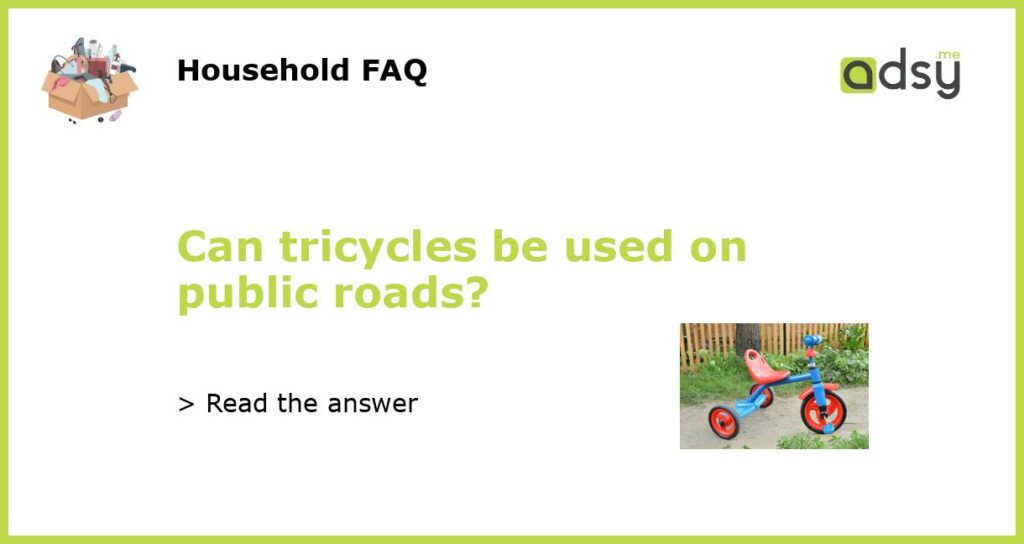Yes, tricycles can be used on public roads in certain circumstances
Tricycles are a popular mode of transportation for children and adults alike. They offer a stable and fun way to get around, and can be a great option for people who have difficulties with balance or mobility. However, when it comes to using tricycles on public roads, there are a few factors to consider.
Know your local laws and regulations
Before taking your tricycle out on the road, it’s important to familiarize yourself with the local laws and regulations regarding tricycles and other non-traditional vehicles. While tricycles are generally allowed on public roads, there may be specific restrictions or requirements that you need to be aware of.
In some jurisdictions, tricycles are classified as bicycles and are subject to the same rules and regulations. This means that you may need to follow traffic laws, including stopping at red lights and stop signs, using hand signals when turning, and riding in the same direction as traffic. It’s also possible that there may be age restrictions or other requirements for tricycle riders.
It’s a good idea to check with your local transportation department or law enforcement agency to find out the specific rules and regulations that apply to tricycles in your area.
Consider the safety of using a tricycle on public roads
While tricycles can be a safe and enjoyable mode of transportation, it’s important to consider the potential risks and hazards of using them on public roads. Tricycles are smaller and slower than most cars, and may not be as visible to other drivers. This can make it more difficult for drivers to see tricycles, especially in heavy traffic or at night.
Additionally, tricycles may not have the same safety features as cars, such as seat belts or airbags, which can make riders more vulnerable in the event of an accident. It’s important to take extra precautions when riding a tricycle on public roads, such as wearing a helmet, using lights and reflectors to increase visibility, and staying alert and aware of your surroundings.
If you have any concerns about the safety of using a tricycle on public roads, it may be worth considering alternative routes or modes of transportation that are more suitable for your specific needs.
Consider the condition of the roads
Another important factor to consider when deciding whether to use a tricycle on public roads is the condition of the roads themselves. Tricycles are generally designed for use on smooth, flat surfaces such as sidewalks or bike paths. They may not be as well-suited for rough or uneven terrain, such as potholes or gravel roads.
If the roads in your area are in poor condition or have limited infrastructure for cyclists, it may be challenging to safely navigate them on a tricycle. In this case, it may be worth exploring alternative routes or using other modes of transportation that are better suited for the road conditions.
Consider the purpose of using a tricycle on public roads
Finally, it’s important to consider the purpose of using a tricycle on public roads. Tricycles can be a great option for leisurely rides or short trips, but may not be practical for longer distances or commuting to work or school.
If your primary goal is to get from one place to another quickly and efficiently, it may be worth considering other modes of transportation that can offer a faster and more direct route. Tricycles can be a fun and enjoyable mode of transportation, but they may not be the most practical choice for every situation.
In conclusion
While tricycles can be used on public roads in certain circumstances, it’s important to consider the local laws and regulations, the safety of using a tricycle on public roads, the condition of the roads, and the purpose of using a tricycle. By taking these factors into account, you can make an informed decision about whether using a tricycle on public roads is the right choice for you.






